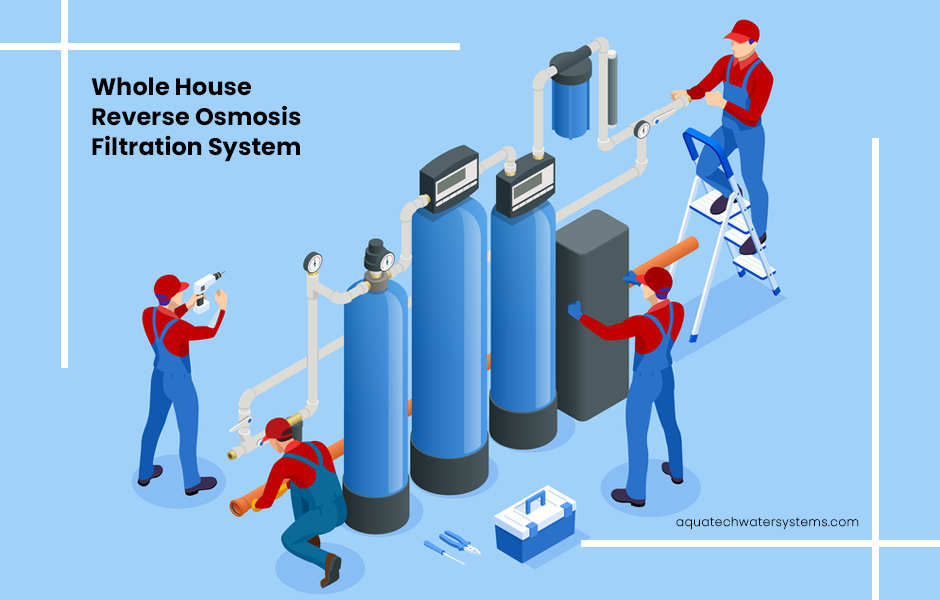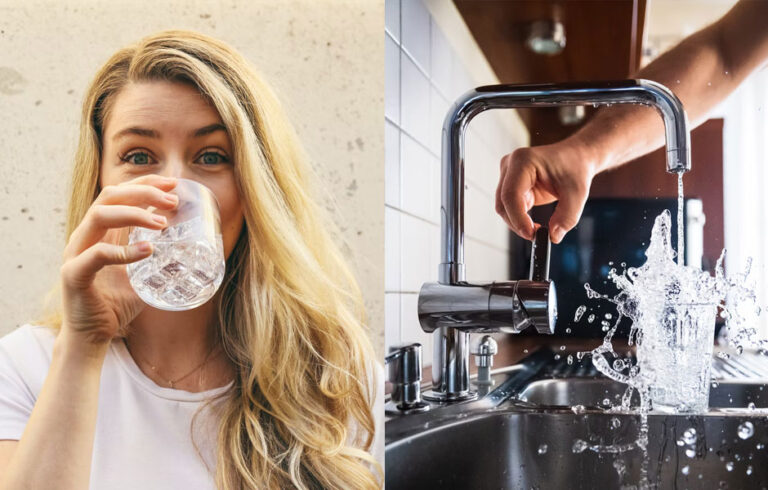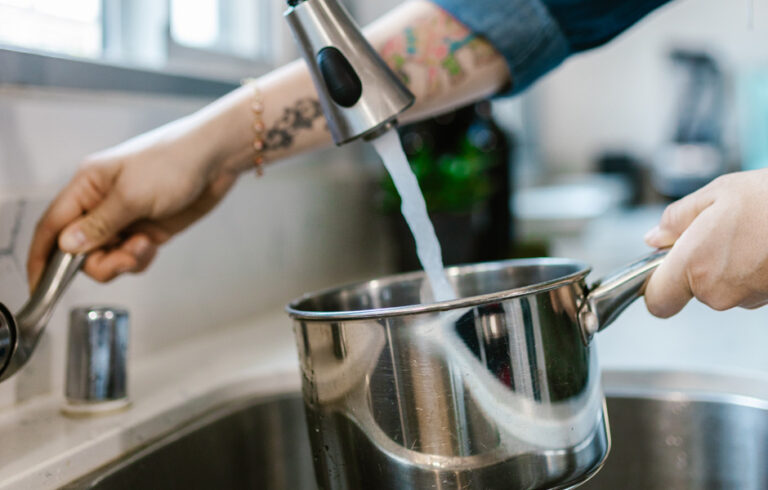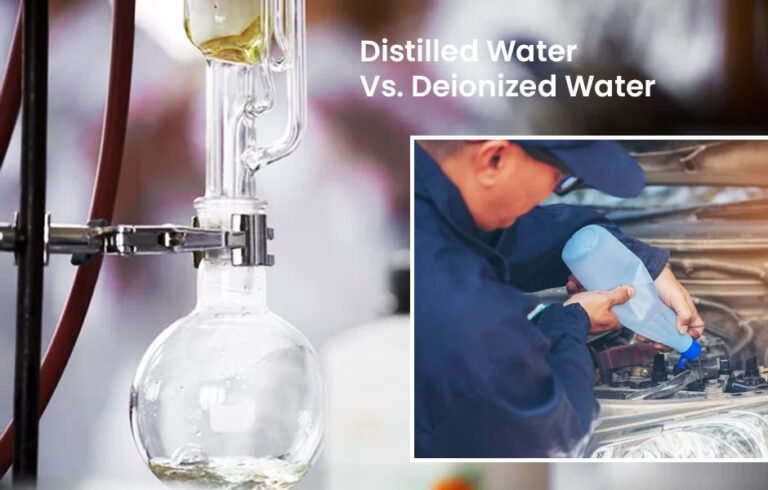If you have a private well or are on a city water system, you may be wondering if you need a whole house reverse osmosis (RO) filtration system. The short answer is maybe.
If you are unsure what, whole-house RO filtration is, it is a type of water filter that removes contaminants from your water at the point where it enters your home. This means that all the water in your home – from the water you drink and cook with to the water you use for bathing and laundry – will be RO filtered.
In this article, let us explore the potential benefits of having a whole house RO filtration system and some of the considerations you need to consider before making a decision.
There are a few different factors to consider when trying to answer this question. The first is the quality of your water. If you have clean, fresh water in your home, you probably do not need a whole-house reverse osmosis filtration system. However, if your water is from a well or other source that may be contaminated, then you may want to consider a whole-house reverse osmosis filtration system.
What is a whole house reverse osmosis system?
A whole house RO filtration system is a type of filtration where reverse osmosis occurs at your home’s water entry point. This technology filters water by using pressure to force water molecules through a semi-permeable membrane. This means that all the water in your home – from the water you drink and cook with to the water you use for bathing and laundry – will be filtered.
Also Read: Reverse Osmosis Filtration Process Explained
A whole house reverse osmosis system works by passing water through a series of filters to remove contaminants. The first filter is usually a sediment filter that removes larger particles like dirt, sand, and rust. The second filter is a carbon filter that removes smaller particles like chlorine and lead. Finally, the water passes through the reverse osmosis membrane, removing even the tiniest particles, including bacteria and viruses.
A whole house reverse osmosis system is a great way to ensure that your family has access to clean, safe water. By installing a whole house reverse osmosis system, you can improve the quality of life for yourself and your loved ones.
Is it necessary to install a whole house reverse osmosis system?
Installing a whole-house RO filtration system is not necessary for everyone. However, there are some situations where installing one may be a good idea.
- If you have a private well, you should have your water regularly tested to ensure it is safe to drink. If your water tests positive for contaminants, a whole house RO filtration system can remove those contaminants and make your water safe to drink.
- If you are on a city water system, your water is already treated for contaminants before reaching your home. However, your water may still contaminate due to old pipes or other factors. In this case, a whole house RO filtration system can remove those contaminants and give you peace of mind knowing that your water is safe to drink.
- Additionally, if you have certain health conditions that could be exacerbated by exposure to contaminants in water. In that case, a whole house reverse osmosis system can give you peace of mind knowing that your water is free of harmful substances.
- There are also some aesthetic considerations to take into account. For instance, if you are unhappy with the taste, smell, or appearance of your water, a whole-house RO filtration system can improve your water quality.
Whole house reverse osmosis systems are a significant investment, but they provide clean, filtered water for your entire home. Whole house RO systems can also improve the taste of your water and extend the life of your appliances.
Things to consider before installing a whole house reverse osmosis system
It would be best if you considered a few things before deciding to install a whole house RO filtration system.
- The first is the cost. A whole house RO filtration system is a significant investment, so you must ensure it is something you can afford. The cost of the system itself, as well as the cost of installation and maintenance, should all be taken into account when making your decision.
- The second thing to consider is the amount of water you use. A whole house RO filtration system will use a lot of water to filter the contaminants out of your water. This means that your water bill will likely increase when you install a whole house RO filtration system. As an example, it takes about 4 gallons of water to produce one gallon of purified water. So if you have a family of four, you could be using up to 16 gallons of water per day to make enough drinking water for your family. This is something to keep in mind if you live in an area with water shortages or restrictions.
- The third thing to consider is maintenance. A whole house RO filtration system will need to be maintained regularly. This includes replacing the filters as well as regularly cleaning the system.
Installing a whole-house RO filtration system is a big decision. Be sure to consider all the factors involved before making a decision.
Pre-treatment of the water:
A whole house reverse osmosis system is one of the most effective ways to remove impurities from your water. However, before the water enters the system, it must be pre-treated to remove any debris or sediment that could clog the system. Additionally, pre-treating your water can also lengthen the life of your whole house’s reverse osmosis system by preventing scale buildup and corrosion.
There are several different ways to pre-treat your water, but the most common method is to install a whole house filter. Whole-house filters are designed to remove sediment, debris, and other contaminants from your water before entering your home. They are typically installed when water enters your home, and they can be either whole house or point-of-use filters.
Point-of-use filters are designed to filter water at a single faucet or appliance, while whole-house filters treat all the water entering your home. Whole-house filters are more expensive than point-of-use filters, but they are also more effective at removing contaminants. If you consider installing a whole house reverse osmosis system, whole-house filtration is a necessary first step.
If you have hard water, it is recommended that you also install a water softener. A water softener will remove the minerals that cause hardness, such as calcium and magnesium, from your water. This will prevent scale buildup and extend the life of your whole house’s reverse osmosis system.
Planning and sizing of the whole house RO system:
To accommodate the whole house RO system, you will need to plan and size your water supply. In addition, the whole house RO system must be able to handle the maximum flow rate of your water supply. This is typically done by installing a more extensive whole house RO system or adding a booster pump to increase the pressure of your water supply.
Another thing to consider is the storage capacity of your whole house RO system. Most whole-house RO systems have a storage tank that holds a certain amount of purified water. This is typically between 50 and 100 gallons. The size of the storage tank will determine how long the system can operate without having to refill it.
Post-treatment of the water:
After the water has been treated by the whole house reverse osmosis system, it will need to be post-treated. This is typically done by installing a carbon filter. Carbon filters remove any residual taste or odor from the water and remove any remaining contaminants. A pH adjuster can also be used to make sure the water is balanced correctly. Another common thing followed after RO is a UV purification system to make the water bacteria-free.
The whole house reverse osmosis system for well water
If you want to install a whole-house reverse osmosis system for your well water, there are a few things you need to know.
The first thing you need to do is have your well water tested. This will give you an idea of what contaminants are in your water and how much of each contaminant is present. You can then use this information to choose the right whole-house reverse osmosis system for your needs.
Next, you will need to have a professional install your whole-house reverse osmosis system. This is important because if it is not installed correctly, it could damage your plumbing or even leak contaminated water into your home.
How much does a whole house reverse osmosis system cost?
The cost of a whole house reverse osmosis system depends on several factors, including the size of the system and the type of filters used. Additionally, the installation cost can vary depending on your home’s plumbing complexity.
Generally, whole house reverse osmosis systems range from $2,000 to $5,000. Usually, a whole house reverse osmosis system requires regular maintenance and replacement filters, which can add to the cost over time.
The whole house reverse osmosis system is a big investment, but it is an investment in your health and your family’s health. If you consider installing a whole house reverse osmosis system, keep in mind the cost and the maintenance required.
How to maintain a whole house reverse osmosis system?
It is essential to maintain the system regularly to keep your whole house’s reverse osmosis system working correctly. Reverse osmosis systems require regular maintenance, and one of the most important parts of maintenance is replacing the filters. The frequency with which you need to replace your filters depends on your water quality, the amount of water you use, and the type of filter you have.
Generally, sediment filters need to be replaced every three to six months, while carbon filters can last two years. Therefore, it is essential to check your filters regularly and return them to keep your whole house’s reverse osmosis system working properly.
In addition to replacing the filters, it is also essential to clean the membranes in your house’s reverse osmosis system regularly. Membranes can become clogged with sediment, debris, and other contaminants, reducing your system’s efficiency. Most manufacturers recommend that you clean your membranes every three to six months.
It is also essential to check the pressure gauges and ensure that the system operates correctly. The whole house’s reverse osmosis systems are a significant investment, but you can help ensure it lasts for many years by regularly maintaining the system.
Pros of whole house RO system:
- It provides clean and safe water for your whole house
- It is a permanent solution to your water needs
- It eliminates the need to buy bottled water
- It is cost-effective in the long run
Cons of whole house RO system:
- The initial investment can be costly
- You will need to maintain the system regularly
- The system can waste a lot of water
We believe that everyone should have access to clean, safe water, and we are committed to providing our customers with the best possible products and services available. Whole-house reverse osmosis systems are the best way to provide your family with clean, safe water.
Further Reading: What is the difference between Reverse Osmosis and Water Softener?
FAQs:
How much does it cost to install a whole house RO system on average?
The average cost of a whole-house RO system is $2000-$5000. It also depends on the size of your home and the water quality in your area. The average cost of maintaining a whole-house RO system is $100-$200 per year. This includes replacing the filters and cleaning the membranes. However, investing in a whole-house RO system is cost-effective in the long run.
How much water does a whole house RO system waste?
A whole-house RO system can waste up to 10 gallons of water for every gallon of filtered water it produces. This is because the system must flush out the contaminants it removes from the water. However, whole-house RO systems are still more efficient than under-the-sink RO systems, which can waste up to 20 gallons of water for every gallon of filtered water.
Can I install my own whole house RO system?
Yes, you can install your own whole house RO system. If you are handy and have some basic plumbing knowledge, you may be able to install your whole-house RO system. However, we recommend hiring a professional to install the system for you. This is because whole-house RO systems are complex and require special knowledge and skills to install correctly.
Is it easy to maintain a whole house RO system?
Yes, whole-house RO systems are easy to maintain. You will need to replace the filters and clean the membranes every two years. However, this is much easier than keeping an under-the-sink RO system, which requires you to replace the filters and clean the membranes every three to six months.
Final thoughts
If you are on the fence about whether or not to install a whole house reverse osmosis system, consider your needs and priorities. If you have a family and want to ensure that everyone has access to clean, safe water, a whole house system is a great option. If you live in an area with hard water, an entire house system can also help protect your plumbing and appliances from damage. Ultimately, the decision is up to you, but whole house reverse osmosis systems are a great way to ensure that your family has access to clean, safe water.
Installing a whole house reverse osmosis system is a big decision and one that should not be taken lightly. However, if you feel that a whole house reverse osmosis system is suitable for you and your family, the benefits outweigh the cost. A whole house reverse osmosis system is an investment in your health and your family’s health, and it is a decision that you will not regret.




